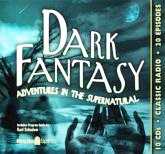
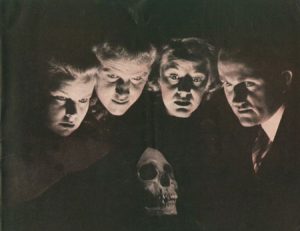 Dark Fantasy aired “Men Call Me Mad” on December 19, 1941. It is the 6th episode of the 31 aired in the 1941–42 series. This is but our 9th episode of this well regarded program and the first since July of 2021, over four years ago. While popular with the public and generally considered a fine example of its kind (it featured stories of the supernatural, horror, SF, mystery, and the uncanny and bizarre on a relatively shoestring budget compared to more high end shows like Suspense or Escape), it lasted less than a year, from November of 1941 through June of 1942. The show came out of local station WKY in Oklahoma City and was syndicated through the parent company, NBC. NBC execs thought the show too scary for children below a certain age, so Dark Fantasy was forced to air very late at night, which may account for a smaller listenership than was required to keep the show afloat. Most of the episodes were written by the show’s talented creator, Scott Bishop, who also created such popular shows as The Mysterious Traveler and The Sealed Book.
Dark Fantasy aired “Men Call Me Mad” on December 19, 1941. It is the 6th episode of the 31 aired in the 1941–42 series. This is but our 9th episode of this well regarded program and the first since July of 2021, over four years ago. While popular with the public and generally considered a fine example of its kind (it featured stories of the supernatural, horror, SF, mystery, and the uncanny and bizarre on a relatively shoestring budget compared to more high end shows like Suspense or Escape), it lasted less than a year, from November of 1941 through June of 1942. The show came out of local station WKY in Oklahoma City and was syndicated through the parent company, NBC. NBC execs thought the show too scary for children below a certain age, so Dark Fantasy was forced to air very late at night, which may account for a smaller listenership than was required to keep the show afloat. Most of the episodes were written by the show’s talented creator, Scott Bishop, who also created such popular shows as The Mysterious Traveler and The Sealed Book.
To illustrate how difficult it is to procure accurate historical information about many radio programs from the Golden Age of Radio, please keep in mind my introductory words just above, and note the inaccuracies brought to light by Old Time Radio historian Karl Schadow, a long time fan of these presentations.
One of Karl’s specific areas of expertise is Dark Fantasy (for which he wrote the Program Guide for the Radio Spirits Dark Fantasy CD linked at top left). Karl has been helpful in aiding my research for several OTR episodes in the past, along the way making it clear that in far too many instances the “scholarship” surrounding the history of Old Time Radio shows is either blatantly false, unresearched, or non-existent, and that relying on any one, or two, or several sources for information does not guarantee accuracy. Unfortunately, such is the case with the historical notes I wrote for this episode, which Karl points out are just plain wrong (except for the original air date), are the result of shoddy research on the part of the websites from which I gathered the information (there were several), and with the goal being to promote Old Time Radio to new audiences in its proper light, decided to write to set the record straight on some of the history of Dark Fantasy. With permission, I am including Karl’s comments and corrections to my intro notes, and realize that I am (as are all who do this sort of thing) at the mercy of the available sources we find on the internet. In this case, I sourced from three different OTR sites, all of which parroted essentially the same information about Dark Fantasy–which as Karl points out was wrong. So with my gratitude and thanks, Karl corrects the inaccurate information:
“Dave,
Unfortunately, many of those sites use verbatim, the info from the DigitalDeli. It has been a struggle to get others to realize that the articles I wrote which came from the best sources available, (WKY and NBC) have utterly blown away the rest of the competition for Dark Fantasy. Anyhow, here’s the lowdown:
1. The date and episode numbers for the 1941-42 series are correct. However, there were more than 31 episodes as Dark Fantasy was syndicated by WKY during the 1942-43 and also the 1943-44 seasons. (Episode/log lists for these two seasons are unknown.) Moreover, there was a 1944 local series on WKY of approx 8-9 episodes, with at least two new scripts.
2. Dark Fantasy was not syndicated by NBC but was broadcast as a network venture from November 14, 1941 through June 19, 1942. It originated from WKY and was heard on NBC for its entire network run.
3. The “Too scary for children” aspect is absolute BS. NBC was interested in adding programs to its network schedule to replace dance bands. Moreover, Dark Fantasy aired at 8:30 pm on some West Coast stations.
4. Scott Bishop was the pen name of George Marion Hamaker. He wrote extensively for WKY and previously WIBW (Topeka, KS). I’m not sure how much drama he did later when he moved (in 1944) to WKAT and then WIOD (Miami Beach). There is absolutely no proof that he wrote for The Mysterious Traveler, The Sealed Book, The Strange Dr. Weird or any of the other Kogan/Arthur collaborations.
As you know, the attempt in OTR and sharing my research with you is that I wish to correct all of the inaccuracies out there. Of course, the main goal is to promote OTR itself.
{“Men Call Me Mad” aired on the last Friday before Christmas in 1941. It found the neighborhood gang eagerly awaiting the coming holiday and the days off from school, and anticipating their usual Saturday morning trip to the local newsstand where they could find relief via their favorite SF pulps from all of the news about the start of WW II with Japan, which had begun less than two weeks before when the Japanese had bombed our naval base at Pearl Harbor, Oahu, one of the Hawaiian islands. They were in luck that Saturday morning, and took home the magazines pictured below. Astonishing Stories (1940-43) lasted only 16 issues. It began as a bi-monthly in 1940 but thereafter managed only a hit and miss schedule to finish off its short run. From time to time they managed to attract some quality authors, witness the James MacCreigh title on the cover, MacCreigh being one of Frederik Pohl’s early pseudonyms. Astonishing Stories managed 4 irregular issues in 1941. Famous Fantastic Mysteries (1939-53) was the brainchild of editor Mary Gnaedinger, who filled a perceived niche for scientific and fantastic story reprints from before the time of the SF or Fantasy magazines. The concept was a hit and gave newer generations of readers a chance to read many classics that deserved a new audience. It was a bi-monthly in 1941. fantastic Adventures (1939-53) was begun by editor Raymond A. Palmer (RAP) as a sister companion magazine to Amazing Stories. At first it offered lighter, “frothier” fantasy according to one reliable source, but by the late 1940s was running pretty much the same sort of stories featured in Amazing though with a more fantastic streak to them, if that was possible. It was a monthly in 1941 though it managed only 10 issues.}
[Left: Astonishing Stories, 11/41 – Center: Famous Fantastic Mysteries, 12/41 – Right: fantastic Adventures, 12/41]
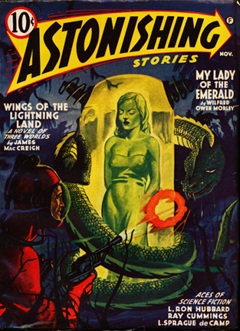
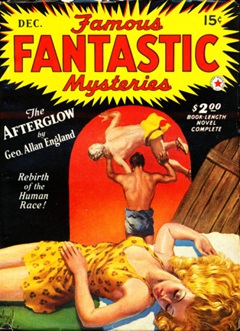
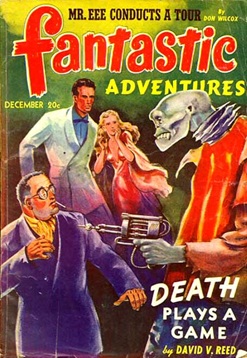
To view the entire list of weekly Old Time Radio episodes at Tangent Online, click here.